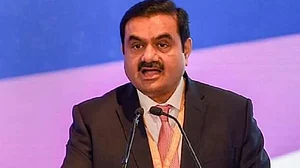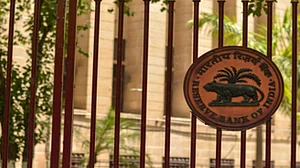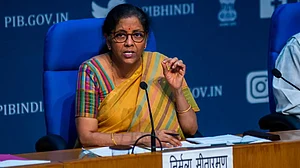
Name: RBI or The Reserve Bank of India
The Reserve Bank of India (RBI) serves as India's central bank and regulatory authority for the banking system. Owned by the Ministry of Finance, Government of India, the RBI is responsible for regulating the supply and issuance of the Indian rupee. It manages the country's main payment systems and supports economic development. The RBI's journey began with the passing of the Reserve Bank of India Act in 1934, laying the foundation for its establishment.
On April 1, 1935, the RBI commenced operations, marking the beginning of a new era in India's financial landscape. Initially, the RBI's Central Office was located in Calcutta. However, in 1937, it relocated to Bombay, which would later become its permanent headquarters. During its early years, the RBI's role extended beyond India's borders. It served as the central bank for Burma (now Myanmar) until April 1947 and for Pakistan until June 1948, highlighting its regional importance in the immediate post-colonial period.
A significant milestone in the RBI's history occurred on January 1, 1949, when it was nationalized. This move brought the central bank under complete government ownership, aligning its operations more closely with national economic objectives. Throughout the 1950s, the RBI played a crucial role in developing a centrally planned economic policy that focused heavily on the agricultural sector, reflecting the priorities of a newly independent nation.
The 1960s through the 1980s saw the RBI reinforcing its regulatory measures to support economic development and control the public banking sector. This period was marked by significant interventions in the banking industry. In 1969, the RBI played a key role in the nationalization of 14 major commercial banks, a move that dramatically altered the banking landscape in India. This process continued in 1980 when the RBI assisted in nationalizing six more commercial banks, further consolidating government control over the banking sector.
Over the years, the RBI has had to adapt to significant economic events and policy changes. One of the most notable in recent history was the demonetization of ?500 and ?1,000 banknotes in November 2016. Despite reportedly advising against this move, the RBI was tasked with implementing this massive currency swap, which involved withdrawing about 86% of the currency in circulation. This event tested the RBI's operational capabilities and its role in managing public expectations during times of economic uncertainty.
In 2018, the RBI made headlines when it restricted entities from dealing with virtual currencies, reflecting the challenges posed by emerging financial technologies.
However, this decision was not without controversy. In 2020, the Supreme Court of India overturned the RBI's restrictions on virtual currencies, ruling that the central bank had not shown sufficient evidence of damage caused by virtual currencies to justify its ban. This decision highlighted the ongoing challenges faced by the RBI in regulating new forms of financial technology.
In 2022, the RBI took a step towards fostering innovation in the financial sector with the inauguration of the Reserve Bank of India Innovation Hub (RBIH) in Bengaluru. This initiative aims to promote collaboration and innovation in the financial technology space, demonstrating the RBI's commitment to staying at the forefront of financial innovation.
Most recently, on May 19, 2023, the RBI announced the discontinuation of ?2,000 denomination banknotes. This decision was part of the RBI's ongoing efforts to manage the currency in circulation and align with changing economic needs.
Throughout its history, the RBI has performed a wide range of functions critical to India's economic stability and growth. These include managing monetary policy, controlling foreign exchange, licensing banks, and issuing banknotes. The RBI operates through a central board of directors and has four regional offices across India, ensuring its presence and influence across the country.
The RBI's organizational structure has evolved over time to meet the changing needs of India's economy. The central board of directors is the main committee of the RBI, consisting of a governor, up to four deputy governors, and several other members representing various sectors and regions. This structure ensures a diverse range of perspectives in the RBI's decision-making processes.
In addition to its core functions, the RBI manages several subsidiary organizations that handle specific aspects of financial operations and technology services. These include the Bharatiya Reserve Bank Note Mudran (BRBNM) for currency printing, the Deposit Insurance and Credit Guarantee Corporation (DICGC) for providing deposit insurance, and the Reserve Bank Information Technology (ReBIT) for addressing IT and cybersecurity needs.
The RBI's role in maintaining financial stability extends to its supervision of the banking sector. It sets broad parameters for banking operations, aiming to maintain public trust, protect depositors' interests, and provide cost-effective banking services. The Banking Ombudsman Scheme, established by the RBI, provides an effective mechanism for addressing customer complaints.
In its capacity as a regulator, the RBI controls the monetary supply, monitors economic indicators like GDP, and decides on the design of rupee banknotes and coins. It employs various methods such as on-site inspections, off-site surveillance, scrutiny, and periodic meetings to supervise new bank licenses, set capital requirements, and regulate interest rates in specific areas.
The RBI also plays a crucial role in the government's financial operations. As a banker to the government, it maintains government accounts, receives payments, and makes payments out of these accounts. It also helps the government raise money from the public by issuing bonds and government-approved securities.
In the realm of foreign exchange management, the RBI works to facilitate external trade and payments and promote the orderly development and maintenance of the foreign exchange market in India. It manages the country's forex and gold reserves, participating in the foreign exchange market to ease volatility when necessary.
The RBI's authority extends to the issuance of currency. It is the sole body authorized to issue banknotes in India, other than the Government of India. The RBI is responsible for maintaining an adequate supply of currency, destroying banknotes when they are no longer fit for circulation, and continually upgrading security features to prevent counterfeiting.
The RBI has also been at the forefront of promoting financial inclusion in India. It has encouraged banks to open branches in rural areas and has implemented policies to bring a larger section of society into the formal banking system. Initiatives like Priority Sector Lending have been instrumental in directing credit to sectors such as agriculture, micro and small enterprises, housing, and education.
In recent years, the RBI has had to navigate the challenges posed by rapid technological changes in the financial sector. The rise of digital payments, cryptocurrency, and fintech companies has required the RBI to continually update its regulatory framework. The establishment of the RBI Innovation Hub in 2022 is a testament to its commitment to fostering innovation while maintaining financial stability.
The RBI's role extends beyond domestic concerns. As India's economy becomes increasingly integrated with the global economy, the RBI plays a crucial role in managing international economic relations. It represents India in various international forums and works to ensure that India's interests are protected in global financial discussions.
Looking ahead, the RBI faces several challenges. These include managing inflation, promoting sustainable economic growth, ensuring financial stability in an increasingly complex and interconnected global economy, and adapting to technological changes in the financial sector. The RBI's ability to navigate these challenges will be crucial in shaping India's economic future.
In conclusion, the Reserve Bank of India has played a pivotal role in India's economic journey since its inception in 1935. From managing the transition from a colonial economy to steering the country through economic liberalization and into the digital age, the RBI has continuously evolved to meet the changing needs of India's economy. Its policies and actions have been instrumental in shaping India's financial landscape, promoting economic stability, and fostering growth. As India continues to emerge as a major global economic player, the RBI's role in maintaining financial stability, promoting innovation, and ensuring inclusive growth will remain crucial.





























